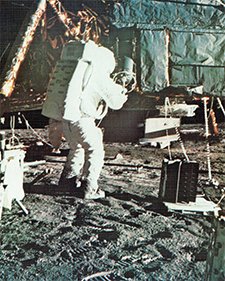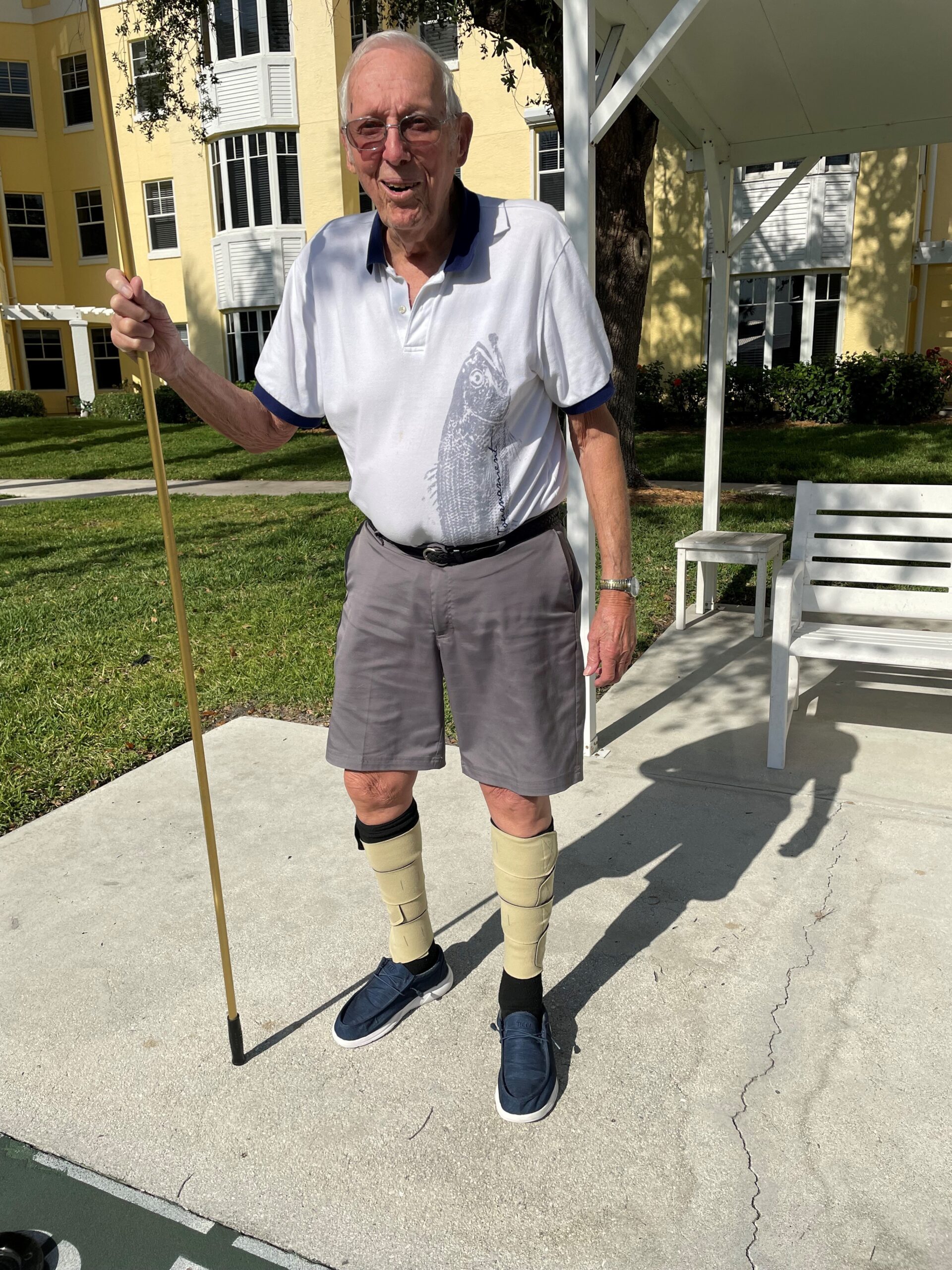- Gallery
- News
- Careers
- Visitation Policy
- Contact Us
- General Info239.CYPRESS
- Sales & Marketing239.481.6605
- Cypress at Home239.349.3300
- Mead Therapy Center239.415.5115
- The Inn Assisted Living239.481.6605
- The Cottage Memory Care239.481.6605
- The Lodge Skilled Nursing239.415.5115
If you’d like to fill out the form to contact us, one of our sales counselors will be in touch by phone or email to discuss your senior living needs at Cypress Cove.
"*" indicates required fields

Cypress Cove in Fort Myers Achieves 95% Occupancy
April 12, 2023
Scholar Profile: Nick Vanderhei
April 21, 2023Dick Schoneker: Key Player in Sending MAN TO THE MOON





By Cypress Cove Resident Bev LisleOn September 12, 1962, President John F. Kennedy announced, “We choose to GO TO THE MOON IN THIS DECADE and do the other things, not because they are easy but because they are hard.” At the time, 33-year-old Dick Schoneker was working for General Electric (GE), building generators for large steam turbines. He heard those words and announced, “I want to be part of that!” And so, he did become part of that. But first … Ninety-year-old Dick Schoneker loves living at Cypress Cove. “It’s the best possible place to be at this age.” He likes the convenience of having everything you need right here on Main Street. “The employees are fantastic – especially during the hurricane challenges. And the food! I’m always looking forward to dinner!” “But to love life at Cypress Cove, you can’t stay in your room!” he advises. “You’ve got to get out and walk and talk to people every day.” When he first moved here as a new widower, he knocked on doors and invited people to meet for a meal or to play shuffleboard, and he volunteered to sub in hallway card games. Now, three years later, he plays Euchre, Hand and Foot, and runs Rummikub on Tuesdays at 2:00 p.m. in the 3rd floor elevator lobby and Shuffleboard games in the Courtyard on Wednesday mornings at 10:30 a.m. In 1966, Dick and his wife became Florida snowbirds and settled in Indian Creek Park, just a few minutes down Summerlin because, “We did the research and that’s where the best square dancing was.” Dick said he volunteered for everything, organizing shuffleboard, bocce, gambling nights, pancake breakfasts, Hawaiian Night with hula dancers and leis, and themed dinners with strolling musicians. Soon after Hurricane Charley ripped through their neighborhood in 2006, they moved to Estero where Dick organized weekly fishing trips and quickly became known as “the fishing machine.” Once he caught 104 fish in a day, then a week later another 104. He would tell frustrated fisher persons, “Get the suntan lotion and the aftershave off your hands! Plunge them into the bait bucket, then bait your hook. The fish’ll love it!” But now…back to the APOLLO SPACE PROGRAM and Dick Schoneker’s role in it. After graduation from high school in 1951, Dick had begun working for GE in his hometown of Schenectady, New York. He was working on steam turbines by day and attending GE’s manufacturing management training program by night when he heard President Kennedy’s audacious declaration. It inspired him to think about Christopher Columbus sailing off to somewhere unknown not knowing if he’d ever be coming back. Soon thereafter, with his eyes on the great beyond of space, Dick left his hometown and moved his family to King of Prussia, Pennsylvania. Before long, he was working in GE’s Nuclear Space Department, which was responsible for such programs as the Nimbus Weather Satellite and outer space probes like Galileo. He became a Nuclear Test Engineer in the development, manufacturing and testing of RTGs. “What are RTGs?” most of us might wonder. Thanks to Google, we learn that an RTG is a “Radioisotope Thermoelectric Generator … a type of nuclear battery … to convert the heat released by the decay of … radioactive material into electricity.” Dick’s job was to write the procedures for RTG assembly and testing. The test facility would simulate the lunar environment; it had to have the capacity to test the equipment and hardware that would be operating in an environment unlike any before known to man. Since he was the guy who wrote the procedures for handling the nuclear power source for the RTG, Dick was the logical one to install the nuclear fuel into the GLFC (graphite lunar fuel cask) located on the lunar module. However, because he was unable to fold his 6’4” frame into the cramped conditions of the lunar module, he had to settle for being the “outside guy” as his smaller colleague did the “inside” part of the job. One of his favorite stories from the Apollo days is about the guy who insisted on pushing into the elevator with Dick and the nuclear cask. For the entire 400-foot trip up, he had to endure Dick’s cautions about what parts of one’s anatomy might be affected if there were to be an “accident.” The nuclear fuel, when installed in the generator, would supply 30 volts of power to operate the experiment packages, which would register such data as wind direction and temperature sensors to determine environmental conditions on the moon. Those and other experiment packages were carried onto the lunar module as well. All equipment, non-flight hardware, had red tags attached so that every piece carried aboard could be accounted for upon removal. Another Schoneker story: “One outside contractor, who had neglected to tether his tools to his wrist as required, dropped his wrench and was unable to retrieve it before T-19 of the countdown. T-19 marks 19 hours before liftoff; the last 19 hours belong to the astronauts alone. The hapless contractor was forced by the Launch Director to stand outside his office throughout the launch until the fuel tank was successfully ejected.” Dick retired from GE in 1993, but his recollections are as fresh as if the events occurred yesterday. He recalls the parties, including a number of them with visiting dignitaries, senators, and John Wayne, among other celebrities. However, his fondest memories from those days are of being awarded a special pass to take his family to observe the launch from one-mile distant. He remembers feeling the vibrations in his clothing and through his feet standing on the ground. His car was vibrating as were his kids sitting on top. And the noise! He remembers the incredibly loud noise of it! And he remembers seeing the tower, immediately after liftoff, flooded with ocean water to cool it down for reuse later. One last thing about Dick Schoneker: He believes in miracles. But you’ll have to ask him about that!
